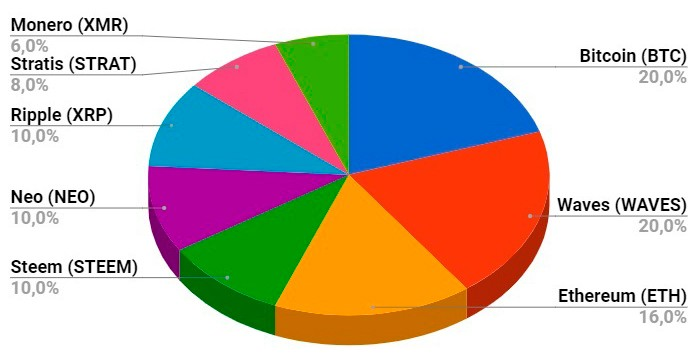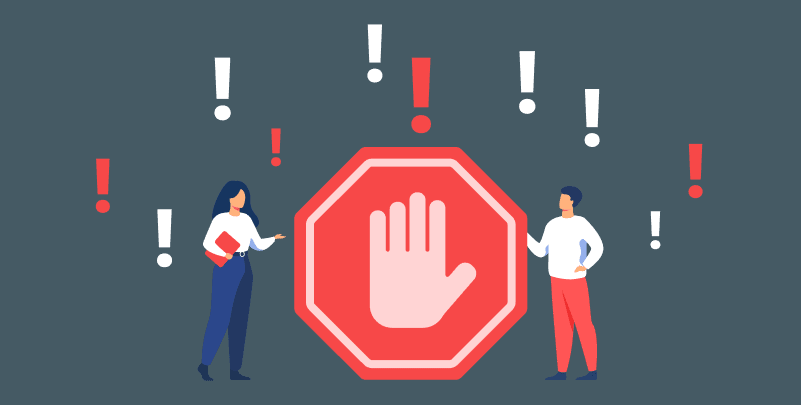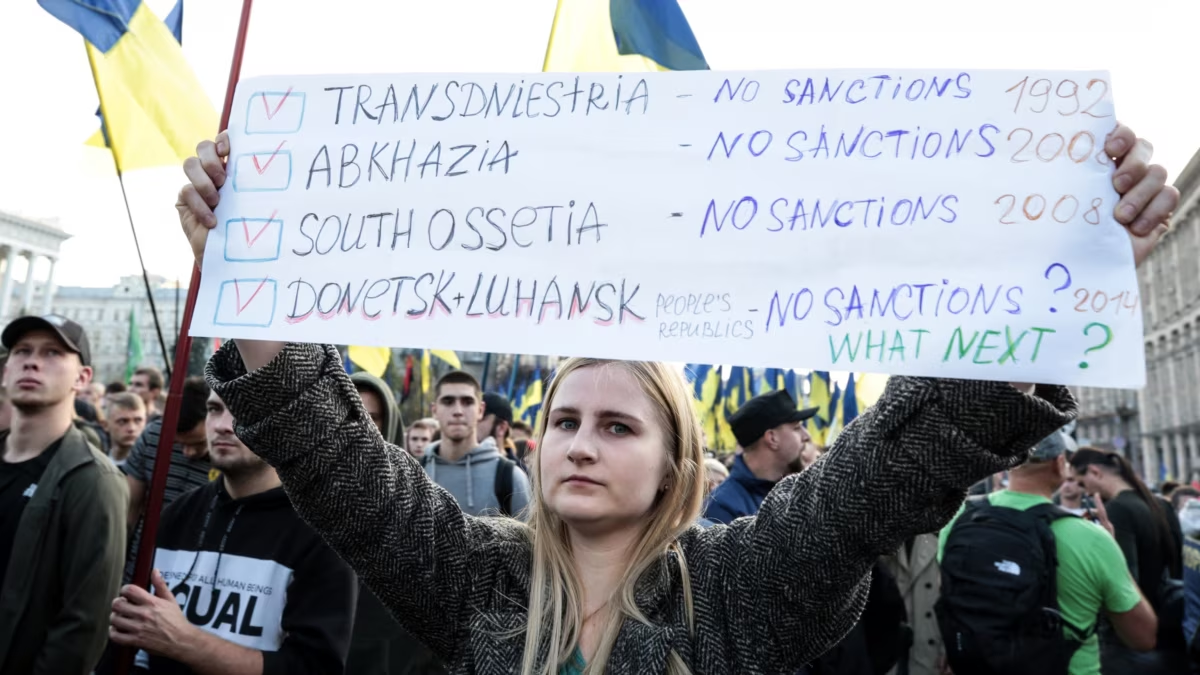
Оскільки OLED-телевізори, монітори та інші гаджети поступово стають доступнішими за нижчими цінами, увага звертається на те, якою буде наступна важлива технологія відображення споживачів.
Micro LED часто фігурує в таких дискусіях, але очікується, що ця технологія не почне вражати споживчі пристрої раніше 2030-х років . Виробники дисплеїв також грають з іншими футуристичними ідеями, такими як прозорі та складні екрани. Але коли мова заходить про технологію, яка може серйозно вирішити проблеми головних користувачів, як-от якість зображення , ціна та довговічність, квантові точки на даний момент здаються найбільш актуальними.
Квантові точки вже переміщуються в категорію дисплеїв преміум-класу, зокрема через телевізори та монітори QD-OLED. Наступним кроком можуть стати екрани QDEL, скорочення від «електролюмінесцентних квантових точок», також відомих як NanoLED. Щоб не плутати з технологією QLED (квантовий світлодіод), яка вже доступна в телевізорах, дисплеї QDEL не мають підсвічування. Натомість квантові точки є джерелом світла. Очікуваний результат — дисплеї з ширшим колірним простором, ніж сучасні QD-OLED (OLED з квантовими точками), які також яскравіші, доступніші та стійкіші до вигоряння.
Схоже, QDEL розглядають як одну з потенційно найвпливовіших розробок споживчих дисплеїв протягом наступних двох років.
Якщо ви любите високоякісні технології відображення, QDEL має бути на вашому радарі.
Що таке QDEL? Можливо, ви знаєте QDEL як NanoLED, оскільки саме так його називає Nanosys , постачальник квантових точок, який розробляє цю технологію. QDEL використовувався під іншими назвами, наприклад QLED, до того, як Samsung оголосив цю абревіатуру для LCD-LED-телевізорів, які використовують квантові точки. Ви також можете бачити, що QDEL називається QD-EL, QD-LED або EL-QD. Як підказує алфавітний суп, є ще деякі речі, які потрібно завершити з цією технологією. У цій статті здебільшого буде використовуватися термін QDEL, з періодичними посиланнями на NanoLED.
Якщо жодна з цих назв не звучить знайомо, можливо, ви ще не можете придбати продукти QDEL. Постачальники припускають, що це може змінитися в найближчі кілька років; Nanosys націлений на 2026 рік для комерційної доступності.
Однак цей графік виглядає досить амбітним, враховуючи обмежену кількість прототипів, які ми бачили, і обмеження, з якими все ще стикається QDEL (докладніше про це нижче). Але навіть якщо ми деякий час не бачимо QDEL, є причини стежити за технологією.
Девід Хсі, старший директор з досліджень дисплеїв у дослідницькій фірмі Omdia, повідомив мені електронною поштою, що, коли мова заходить про споживчі гаджети, він очікує, що QDEL найбільше вплине на телевізори, дисплеї ПК та автомобільну промисловість. У разі комерціалізації та масового виробництва QDEL може мати краще співвідношення ціни та продуктивності, ніж OLED, але йому все одно буде важко конкурувати з LCD-LED на основі вартості.
У технічному документі ( PDF ) від 2023 року Nanosys і виробничого партнера Sharp Display описується виробничий процес струменевого друку, який можна застосувати до моніторів і телевізорів QDEL. Повідомляється, що процес фотолітографії складніший, оскільки в процесі пошкоджуються квантові точки, але він може розширити додатки QDEL, включивши в них планшети, ноутбуки, смартфони, пристрої для носіння та продукти AR/VR. Джефф Юрек, віце-президент Nanosys з маркетингу, підтвердив мені електронною поштою, що Nanosys очікує, що продукти QDEL, виготовлені за допомогою фотолітографії, вийдуть на ринок першими.
Чудо без підсвічування Сучасні OLED-екрани використовують матеріал OLED як джерело світла, а QD-OLED спеціально застосовує квантові точки для перетворення світла на колір. У QLED джерелом світла є біле підсвічування; Дисплеї QDEL подають електрику безпосередньо на квантові точки, які потім генерують світло.
Збільшити / Порівняння основних дизайнів QLED Збільшити / Порівняння основних дизайнів QLED QDEL використовує шар квантових точок, затиснутих між анодом і катодом, щоб полегшити потік електрики в квантові точки.
Збільшити / Діаграма дисплея QDEL/NanoLED Збільшити / Діаграма дисплея QDEL/NanoLED Дисплеї QDEL містять пікселі з червоного субпікселя з квантовою точкою, зеленого субпікселя з квантовою точкою та, на відміну від сучасних дисплеїв QLED і QD-OLED, синього субпікселя з квантовою точкою. Дисплеї QDEL використовують ті ж ядра квантових точок, що й продукти QD-OLED і QLED, сказав мені Юрек з Nanosys, додавши: «Функціоналізацію зовнішнього шару [квантових точок] потрібно змінити, щоб зробити його сумісним з кожною архітектурою дисплея. , але ядра, які виконують важку роботу, практично однакові для всіх цих систем».
Оскільки пікселі QDEL створюють власне світло і тому можуть повністю вимкнутися, дисплеї QDEL можуть забезпечувати такий самий глибокий чорний і насичений контраст, які зробили OLED популярним. Але з використанням квантових точок прямого огляду зацікавлені сторони заявляють про потенціал ширшої палітри кольорів, ніж ми бачили на споживчих дисплеях раніше. З меншою кількістю шарів і деталей також є наслідки для ціни продуктів QDEL, довговічності та навіть тонкості.
QDEL в дії Зараз ви не можете купити нічого з екраном QDEL, але протягом останніх кількох років компанії продемонстрували прототипи . Останнє оновлення передбачуваної технології з’явилося під час торгової виставки CES у січні, коли Sharp Display продемонструвала два прототипи невеликій кількості відвідувачів. Один екран був 12,3 дюйма і 1920×720. Інший прототип вперше показав, що QDEL масштабується до розміру, який підійде для таких продуктів, як монітори. Однак ми не знаємо роздільної здатності цього 30-дюймового прототипу.
Одним із найбільших досягнень цих нещодавніх прототипів порівняно з попередньо продемонстрованими зразками QDEL є те, що вони виготовлялися при атмосферному тиску, а не вимагали вакуумної камери. Як повідомляє CNET , це «великий крок до економічного виробництва».
Переваги QDEL Той факт, що квантові точки вже успішно застосовуються до РК-світлодіодних та OLED-екранів, надихає для майбутніх продуктів QDEL. Зацікавлені сторони QDEL стверджують, що ця технологія може забезпечити ефективність, наприклад, менше енергоспоживання та вищу яскравість, ніж OLED. ( Дослідження з використанням прототипу пристрою зафіксувало світловипромінювальні діоди з квантовими точками, що досягають 614 000 ніт. Звичайно, це не ті результати, які ви повинні очікувати в реальному споживчому продукті).
Через ці очікувані переваги деякі ентузіасти дисплеїв передбачають, що одного дня QDEL замінить OLED та інші технології дисплеїв преміум-класу для споживчих пристроїв високого класу.
Є також надія, що QDEL з часом може працювати довше, ніж OLED, особливо тому, що QDEL не покладається на органічні матеріали, які можуть спричинити вигоряння. Проте в даний час дослідники все ще працюють над тим, щоб сині та зелені квантові точки могли служити достатньо довго, щоб створити життєздатний споживчий гаджет без використання кадмію. У поточному стані дисплеї QDEL стали б помітно тьмянішими швидше, ніж сучасні дисплеї OLED.
Але оптимісти вважають, що термін служби дисплеїв QDEL колись може бути таким же, як і РК-світлодіоди, і перевищить термін служби OLED. Nanosys вважає, що матеріали з синіми квантовими точками можна розробити так, щоб вони прослужили довше, ніж сині OLED, через проблеми з досягненням високої ефективності та тривалого терміну служби з синіми OLED «за правильної довжини хвилі або кольору», — пояснив Юрек.
Він продовжив:
Короткохвильове світло, як-от синє, має високу енергію... Енергія, необхідна для створення глибокого короткохвильового синього кольору, якого вимагають такі стандарти відео, як DCI-P3, достатньо висока, щоб пошкодити матеріал, який використовується для виготовлення світла. Це одна з ключових причин того, що термін служби синіх OLED коротший, ніж інші кольори.
Тим не менш, термін служби емісійного шару квантових точок є, мабуть, головним вузьким місцем у комерціалізації QDEL, сказав Се, додавши:
Термін служби безкадмієвих синіх квантових дисплеїв історично був надто коротким, щоб створити комерційно життєздатні дисплеї. Дані Nanosys у 2021 році становили близько 10 000 годин, щонайменше на дві величини (100x) менше, ніж мінімально необхідно. Проте протягом останніх років термін служби матеріалу QD [емісійного шару] швидко покращувався, і деякі провідні компанії незабаром оголосять про «проривні» результати.
Юрек сказав, що на конференції SID Display Week у травні мають бути оголошення про відповідні розробки.
Що щодо Micro LED? Micro LED має багато переваг OLED, включаючи індивідуальні емісійні пікселі для теоретично нескінченного контрасту. Як і QDEL, мікросвітлодіоди не повинні бути такими чутливими до вигоряння, як OLED, і можуть стати яскравішими, ніж OLED.
Мікросвітлодіодне світлодіодне світлодіодне з’явилося сьогодні . Якщо у вас є три цифри, які ви можете витратити на телевізор, ви можете придбати величезний набір мікросвітлодіодів від таких компаній, як Samsung або C Seed . Однак виробничі проблеми, пов’язані з масштабуванням технології до звичайних розмірів телевізорів надійним і доступним способом, зробили це недосяжним для більшості.
Юрек сказав, що врешті-решт стане можливим виробництво QDEL дешевше, ніж Micro LED, а також OLED та LCD-LED. Але поки ми не побачимо це в дії, нам доведеться сприймати це з певною часткою солі.
QDEL нібито можна виготовити за допомогою тих самих машин і обладнання, які зараз використовуються для виготовлення світлодіодних дисплеїв. Крім того, незважаючи на те, що QDEL і Micro LED покладаються на кристалічні неорганічні напівпровідникові матеріали, ці матеріали обробляються по-різному під час створення дисплею QDEL і Micro LED, причому останній має різні проблеми.
Ми дуже далекі від того, щоб знати, як виглядатиме якість зображення в реальних продуктах QDEL і скільки технологічних брендів в кінцевому підсумку інвестують, щоб перенести QDEL на вигідні продукти. Але експерти з дисплеїв, з якими я спілкувався, очікують, що якість зображення буде подібною до мікросвітлодіодів, а також більше кольорів. За словами Еріка Вірі, головного аналітика дисплеїв у Yole Intelligence, QDEL також має покращити «чистоту кольорів» порівняно з OLED.
Споживчі продукти Micro LED і QDEL повинні бути яскравішими, ніж OLED, але Вірі вважає, що перевага яскравості в кінцевому підсумку дістанеться виробам Micro LED, оскільки вони «можна працювати дуже сильно, не пошкоджуючи їх».
Деякі підозрюють, що QDEL може мати більший вплив, ніж Micro LED, через затримки, з якими Micro LED зіткнувся під час впровадження в основний продукт. Наприклад, у березні Марк Гурман цитував анонімні джерела в Bloomberg , заявивши, що Apple відмовилася від виробництва Apple Watch і, можливо, інших гаджетів із мікросвітлодіодами через ціну та складність. Це відбулося після багатьох років інвестицій, і, за оцінками Вірі, це були мільярди зусиль. У звіті Гурмана говориться, що Apple продовжуватиме покладатися на OLED для своїх розумних годинників і, можливо, шукатиме нових партнерів, щоб знову піти на шлях Micro LED.
На відміну від цього, Samsung у вересні підтвердила свою увагу до Micro LED як до майбутнього телевізорів преміум-класу.
QDEL і Micro LED можуть співіснувати поряд з OLED Цілком можливо, що через кілька років QDEL, Micro LED і OLED стануть доступними. У цьому сценарії Вірі з Yole вважає, що всі три є потенційно конкурентоспроможними для ноутбуків і планшетів. QDEL міг би випередити OLED для телевізорів преміум-класу, як і Micro LED, якщо витрати коли-небудь знизилися, сказав Вірі, додавши, що телевізори, ймовірно, є «пріоритетною метою» для додатків QDEL. Але потенційні вдосконалення OLED, наприклад, пов’язані з яскравістю або ризиком вигорання, можуть підвищити конкурентоспроможність технології в споживчих пристроях.
Virey вважає, що QDEL матиме дещо легший шлях до забезпечення очікуваної якості зображення для споживчих дисплеїв за розумну ціну, ніж Micro LED. Однак він очікує захоплюючої, напруженої гонки «протягом наступних кількох років».
За словами Вірі, OLED має продовжувати домінувати на смартфонах через потребу у високій щільності пікселів, чого було б важко досягти за допомогою QDEL через його процес друку. Він додав, що цей процес «досить хороший для телевізорів, можливо, ноутбуків і планшетів, але його складно вдосконалити до рівня смартфонів». За словами Вірі, смартфони є «найважчим застосуванням» для Micro LED через обмеження вартості.
Цікаво, що коли пил розійдеться, Юрек вважає, що QDEL вважатиметься новим королем дисплеїв преміум-класу:
Я також очікую, що Micro LED і NanoLED будуть позиціонуватися як більш преміальні, ніж OLED, враховуючи вищу потенційну яскравість і довговічність. Проте всі три технології забезпечують чудовий досвід. Таким чином, виробництво та вартість будуть ключовими відмінностями. NanoLED обіцяє бути легшим у виготовленні, ніж OLED або MicroLED. Ось чому я думаю, що NanoLED стане найкращою технологією відображення в довгостроковій перспективі.
Hsieh з Omdia менш впевнений у тому, що покупці мають як варіанти Micro LED, так і QDEL як варіанти дисплеїв преміум-класу. «На даному етапі все ще важко сказати, чи будуть Micro LED і QDEL співіснувати чи ні. Це потрібно буде виправдати масштабом виробництва QDEL і вартістю після того, як він перейде на стадію комерціалізації... до 2025-2026 років», - сказав він. .
Пристрої QDEL виготовити легше, ніж мікросвітлодіодні Для виготовлення дисплеїв Micro LED чіпи Micro LED вирощують епітаксіально на напівпровідникових пластинах. Завдяки процесу підбору й розміщення тисячі чіпів мікросвітлодіодів переносяться на підкладку. Зробити це надійно, швидко та за ціною, порівняно з виробничими процесами інших типів дисплеїв, виявилося складно , і ці перешкоди роками обмежували доступність Micro LED.
Дисплеї QDEL, тим часом, можуть бути виготовлені за допомогою того самого процесу фотолітографії, який вже використовується для виробництва різних електронних пристроїв і плоских дисплеїв, включаючи РК-світлодіоди. Це також означає, що має бути досить просто створювати дисплеї QDEL, які масштабуються до найбільших споживчих телевізорів, доступних сьогодні.
Юрек пояснив:
QD [квантові точки] для NanoLED обробляються розчином. Можливість виробляти напівпровідники у величезних масштабах у хімічному технологічному обладнанні дозволяє нам виготовляти точні оптичні випромінювачі за надзвичайно низькою вартістю порівняно з фабриками. Одного разу ми підрахували, що для виробництва 1 грама квантових точок знадобиться 50 квадратних метрів площі пластини, якщо ми використовуємо традиційне виробництво напівпровідників.
Ці квантові точки в розчині можна потім перетворити на чорнила або фоторезисти для нанесення візерунків на дисплеї за допомогою струменевого друку або фотолітографії. Мета полягає в тому, щоб мати можливість робити це в стандартній атмосфері без необхідності поміщати весь дисплей у вакуум (як це потрібно для високочутливих OLED).
Тим не менш, залишаються проблеми в тому, як оптимізувати та масштабувати виробничий процес для QDEL, будь то фотолітографія чи струменевий друк.
Доступність QDEL «Ми націлюємося на 2026 рік для комерційної готовності матеріалів у наших публічних дорожніх картах. Коли споживачі отримають у свої руки технологію, залежить від брендів і конкретних продуктів, які вони хочуть запустити», — сказав мені Юрек з Nanosys.
Це надихає, але це не дає чіткого графіка, коли можна буде купити телевізор QDEL, і я не здивуюсь, якщо побачу, що дата комерційної готовності відкладена. Навіть якби Nanosys були готові продавати іншим брендам, є багато інших деталей, які повинні стати на свої місця, перш ніж люди зможуть купити продукт із квантовими точками прямого огляду. І перші продукти можуть не виправдати очікувань, як це іноді буває з новими технологіями.
Отже, що буде після OLED? Є кілька ідей, у тому числі більше та кращий OLED. Але журі, до складу якого входять дослідники та комерційні фірми, що займаються дослідженнями та розробками, технологічні бренди та, зрештою, користувачі, все ще немає. І до ухвалення рішення пройдуть роки.
Поки ми чекаємо, тим із нас, хто зацікавлений у винятковій якості зображення за доступнішими цінами, легко підтримати QDEL.





